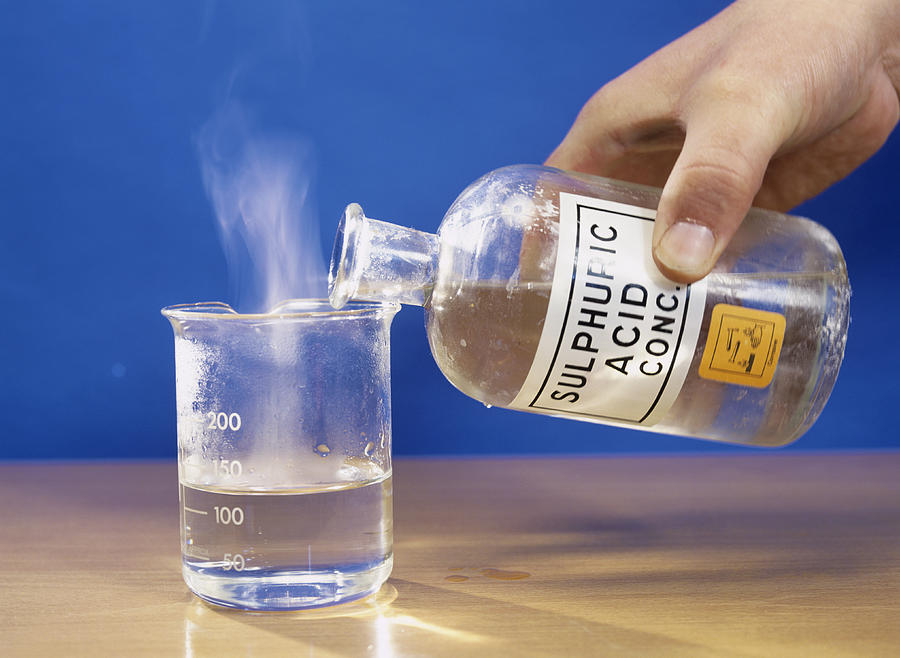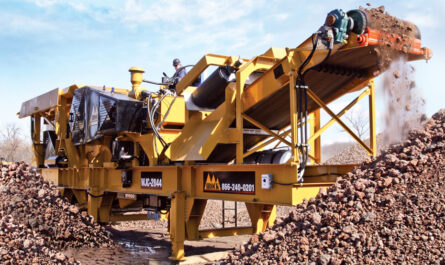Chemical and Physical Properties
Sulfuric acid is an oxyacid consisting of a sulfate ion SO42- and two hydrogen ions H+. One of its hydrogen atoms can dissociate or ionize when mixed with water which makes it a strong acid. When pure, it is an odorless, colorless and viscous liquid but commercial grade sulfuric acid contains impurities like sulfate salts which may impart slight coloring. Some important physical properties of sulfuric acid include a density of about 1.84 g/cm3, melting point of 10.5°C and boiling point of 338°C. It is soluble in water and highly hygroscopic in nature which makes it very caustic. Exposure to sulfuric acid can cause severe burns, blindness or even death on prolonged contact with body tissues.
Industrial Production
Almost 95% of Sulfuric Acid commercially produced is by the contact process which involves the catalytic oxidation of sulfur dioxide to sulfur trioxide and subsequent hydration to sulfuric acid. In this process, sulfur or sulfide ore is burned in air or oxygen to produce sulfur dioxide. This SO2 gas is passed over vanadium pentoxide catalyst at about 450°C to oxidize to SO3 according to the reaction:
SO2 + 1/2 O2 → SO3
The SO3 gas produced is then absorbed in concentrated sulfuric acid where it reacts with water to form more sulfuric acid and heat as given in the reaction:
SO3 + H2O → H2SO4
This exothermic reaction is strongly favored making the process highly efficient for commercial scale production of Sulfuric Acid with yields over 90%.
Uses and Applications
Sulfuric acid has extensive industrial applications owing to its versatile chemical properties and strong acidic nature. Some major uses are:
– Fertilizer Production: It is used to produce ammonium sulfate and superphosphates which are important nitrogen and phosphate fertilizers respectively.
– Metal Processing: It is employed for pickling or surface passivation of steel and extraction of metals like copper, zinc, lead from their ores.
– Petroleum Industry: Alkylation of fuels, refining of gasoline and conversion of olefin to gasoline are acid catalyzed processes using sulfuric acid.
– Hydrometallurgy: Leaching and solvent extraction in mining industry relies heavily on sulfuric acid for extracting metals like copper, nickel, cobalt and uranium from their ores.
– Battery Production: Both lead-acid batteries in cars and sulfuric acid-based batteries use this acid as electrolyte which is essential for their functioning.
– Chemicals Manufacturing: It is a precursor and catalyst in making several industrially significant chemicals like explosives, dyes, pharmaceuticals.
– Oil and Gas Processing: Sulfuric acid is used as a catalyst or dehydrating agent in various petroleum refining and fractional distillation steps.
– Other Applications: Domestic chemicals, detergents, anti-corrosives, textile processing also use it
*Note:
1. Source: Coherent Market Insights, Public sources, Desk research
2. We have leveraged AI tools to mine information and compile it




